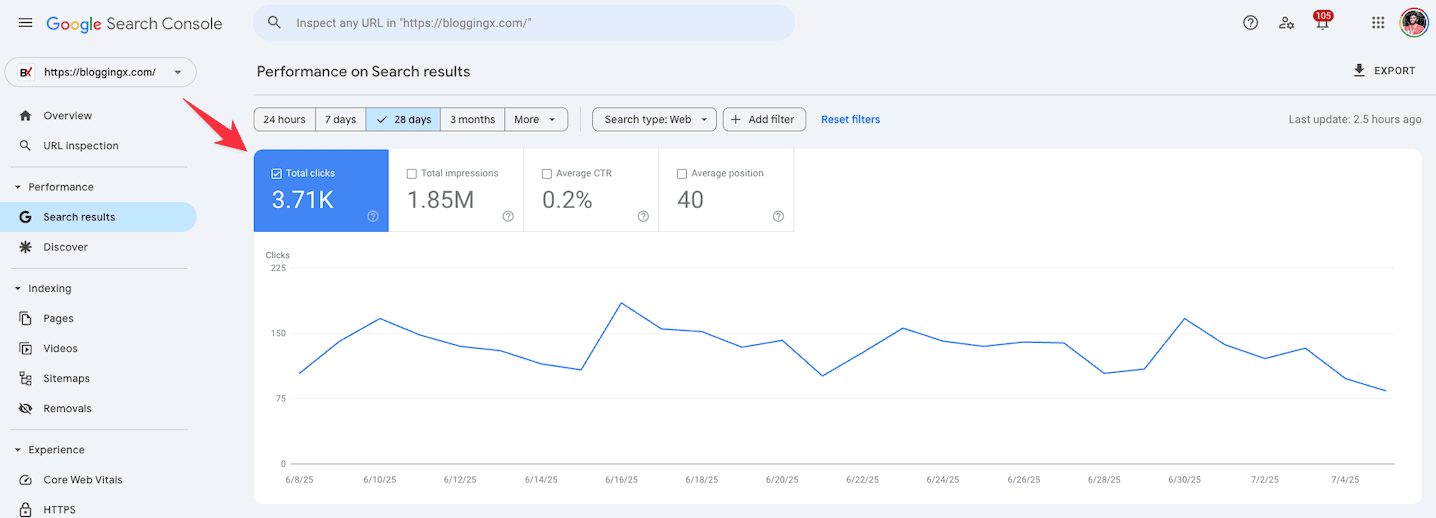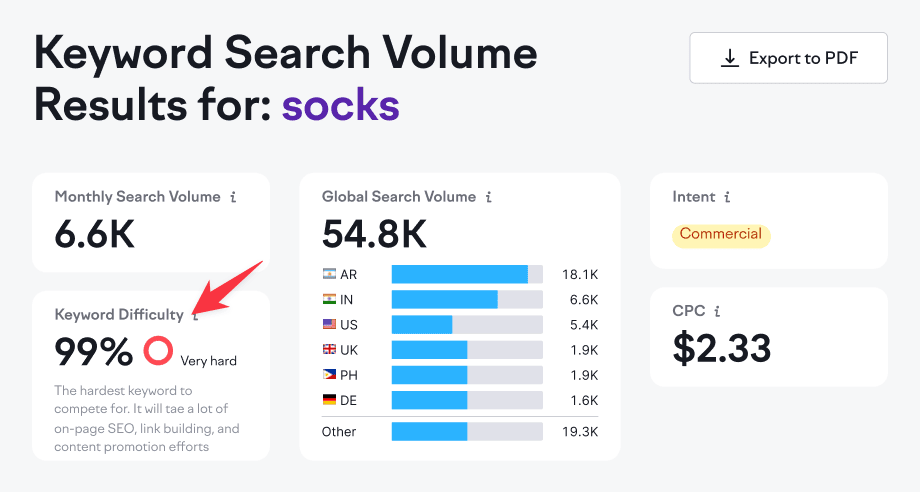Ever notice how your Google Analytics traffic numbers look completely different from what Semrush shows?
Trust me, you’re not the only one.
Whether you’re looking at keyword volume, competitor traffic, or your site rankings, it’s normal to ask yourself: is any of this data actually real?
And what matters even more – when can I trust it?
Because here’s the truth.
Semrush (see my full review) is one of the most powerful SEO tools out there.
But that doesn’t mean everything it shows is spot on.
In this post, we’ll break it all down.
- Where Semrush’s numbers tend to hold up
- Where they’re completely off
- And what kind of data is most useful if you actually want results
Let’s get into it.
How does Semrush collect and estimate data?
Let’s clear one thing up.
Semrush doesn’t get its traffic numbers from your Google Analytics or Search Console.
It uses a mix of third-party data, clickstream tracking, and its own crawling systems to estimate traffic, rankings, and keyword metrics.
Here’s how it works:
- Clickstream data: Semrush tracks user behavior using data from browser extensions, antivirus tools, and apps. These data points form a sample set, which is scaled up to estimate actual visits. But smaller sites or niche content often fall outside this dataset.
- Keyword models and CTR logic: Semrush looks at rankings, applies an estimated click-through rate based on position, and calculates likely traffic. This can miss branded search, SERP features, and shifts in user behavior.
- Crawling and SERP monitoring: Their crawler scans billions of pages to track rankings, backlinks, and site structure. Still, newly indexed content or fast-moving results may not always be captured immediately.
Bottom line?
It’s still an estimation, not a live feed from your server.
How we checked Semrush’s accuracy
We didn’t run a lab experiment.
But we’ve done enough real-world digging to see where Semrush stands.
Over the past few years, we’ve tracked multiple websites across different industries and sizes.
We’ve seen how Semrush traffic estimates line up (or don’t) with what we see in:
- Google Analytics
- Search Console
- Server logs and CRM dashboards
And we didn’t stop there.
We dug into Reddit threads, SEO communities, and comparison studies from other agencies.
We looked for what people were saying especially when Semrush’s numbers were way off.
We also reviewed newer features like:
- The AI Traffic Dashboard
- Generative AI search reporting
- And how well it tracks tools like ChatGPT, Perplexity, and Copilot in 2025
But I’ve seen enough patterns to spot what’s reliable, what’s inflated, and what’s just plain off.
Starting with the big one – traffic estimates.
How accurate are Semrush traffic estimates?
After analyzing my own sites and the blogs I manage, here’s what I discovered:

My site bloggingx.com gets 3.71k clicks/month in Google Search Console.

But Semrush reports only 2.1k clicks/month.
That’s a nearly 43% under-estimate.
Here’s why this matters:
- Smaller sites often rely heavily on a few top-tier keywords.
- If those keywords aren’t well represented in Semrush’s data (which relies on clickstream and modelling, not direct Google stats), estimates skew far off.
Here’s what I’ve seen and researched…
- Traffic tends to be estimated lower: Semrush uses clickstream data with CTR models. If your site isn’t part of their sample set, the numbers drop. Reddit confirms this: “Traffic analysis if not connected to gsc or analytics is wrong af. Was telling my website… 16k visits per month while… it is only 4k/month.”
- Small/mid-site variance is real: We’ve seen Semrush under-report by 30 – 60%. This depends on your traffic volume and niche especially if your site relies on just 1-2 main keywords.
- Competitor tools have similar issues, but different patterns: Similarweb typically underestimates site traffic by 30 – 60% but works better with mid-size sites (5k–100k visits/month). Ahrefs swings wildly in both directions, from -80% to +80%.
- OWOX datashows: Semrush underestimates high-traffic sites by around 30 – 45%. Similarweb still underestimates but stays more consistent across different site sizes.
Overall, latest reports confirm that Semrush is generally good enough to track traffic trends even when the exact numbers are off by 40 – 60% on smaller sites.
What does this mean for you?
- Expect lower numbers on small sites. Your 3.7k could show up as 2k or less.
- Estimates get better as your traffic rises above 50k/month.
- Use it for trends, not facts. If Semrush shows a drop or surge, it likely reflects reality.
- Similarweb may be better for mid-sized sites, but neither tool is perfect.
Quick comparison: Semrush vs rivals
| Tool | Small sites (<10k/mo) | Mid sites (10k–100k/mo) | Large sites (100k+/mo) |
| Semrush | Underestimates ~40–60% | Underestimates ~30–45% | Underestimates ~30% |
| Similarweb | Similar bias | Slightly better accuracy | Comparable to Semrush |
| Ahrefs | Highly inconsistent | Unpredictable | Same volatility |
Bottom line?
Semrush is fine for spotting directional trends and competitive benchmarks.
But for actual traffic numbers, especially on smaller sites, always refer to your own Google Analytics or Search Console data.
How accurate is Semrush’s keyword data?
Let’s start with search volume.
👎 Semrush uses 12-month averages for its search volume estimates. That means the number you see is smoothed out across the past year.
In stable niches, this works fine.
But if you’re covering fast-moving topics like AI, software tools, or tech updates, the data often lags behind reality.
That’s part of why Semrush underreported traffic for my site.
In the past few months, I’ve shifted toward more content around AI reviews, tools, and search-related topics.
These keywords are seeing rising interest.
But since Semrush averages out the past 12 months, it doesn’t reflect that recent surge.
So even if a keyword now has high search demand, it might still show a low volume.
Now let’s talk about keyword difficulty (KD).

Semrush assigns a KD score based on the authority and backlink profiles of the top-ranking pages.
In theory, it shows how hard it would be to rank.
But in practice, I’ve noticed the scores can sometimes be off, especially for newer topics or keywords with mixed SERP intent.
So I treat KD as a rough guide; not something I fully rely on.
Then there’s CPC (cost-per-click).
This metric comes from Google Ads data and gives an idea of commercial intent.

Generally, I’ve found Semrush’s CPC estimates to be directionally useful.
But for long-tail or niche queries, the numbers are often zero, even when we know there’s ad activity happening.
In summary?
- Search volumes can miss surging trends.
- Keyword difficulty helps, but don’t use it in isolation. For better keyword insights, consider using the Keyword Magic Tool.
- CPC data works for broad terms but falls short for niche or long-tail intent.
It’s best to cross-check what you see in Semrush with the SERPs and what you already know from your content’s real performance.
How reliable is Semrush’s AI traffic tracking?
One of the newest additions to Semrush in 2025 is its AI Traffic Dashboard.

This tool is designed to estimate how much traffic your site might be getting from AI-based sources like ChatGPT, Gemini, Perplexity, and Copilot.
It’s a pretty forward-thinking feature.
But how accurate is this AI traffic data?
From what I’ve seen so far, the dashboard gives a broad estimate.
It shows:
- How much of your traffic might be coming from generative AI tools
- How those numbers compare month-over-month
- What percentage of traffic is AI vs traditional organic
It’s definitely helpful for spotting early signals.
But I wouldn’t call it precise.
There’s no direct referrer data from these tools yet.
Which means Semrush is mostly using models and detection patterns like:
- Content snippets used in responses
- Prompt-matching
- Estimated visibility
To guess where AI traffic might be landing.
It’s a good step forward, but we’re still early.

One report said AI visitors can be 4.4 times more valuable in terms of conversions, even though they often bounce faster and view fewer pages.
That lines up with what I’ve noticed:
Pages getting more mentions in AI responses don’t always show up as sessions in Analytics, but they do tend to pull in better leads.
The takeaway?
Semrush’s AI traffic reporting is useful if you want to stay ahead of where search is going.
Just don’t rely on it yet as a hard performance metric.
Treat it like a visibility signal; not a report card.
How does Semrush compare with Ahrefs and Similarweb?
Let’s start with Ahrefs (see my full review).
For years, it’s been a go-to tool for SEOs, especially when it comes to backlink data and technical audits.

But recently, Ahrefs doubled its pricing.
Ahrefs has doubled their pricing: Standard plan jumped from $99/month to $199+, depending on your needs.
At this price point, it’s competing directly with Semrush Guru.
But Semrush offers more value with:
- Content marketing features
- Historical data
- Multi-location tracking
- AI traffic reporting
If you need an all-in-one tool for SEO, content, and paid traffic, Semrush gives you more for your money.
But how do they stack up on accuracy?
Ahrefs tends to give wider traffic swings.

In my experience and based on what many users on Reddit have reported, it can overestimate or underestimate traffic by 80% or more, especially on newer or niche domains.
Semrush leans the other way.
It tends to underestimate, but does so more consistently.
You can spot directional trends, like when traffic is rising or dropping, and even if the numbers aren’t spot on.
Now on to Similarweb.

It’s often seen as the most enterprise-level among the three.
Some companies use it to track competitor market share and high-level trends.
From the comparisons I’ve seen:
- Similarweb performs better on large sites (100k+ visits/month)
- Semrush performs better on small-to-mid size sites
- Similarweb’s interface is more focused on traffic and engagement
- Semrush covers SEO, PPC, content, keyword tracking, audits, and now AI
So, it depends on what you’re looking for.
If you’re managing SEO and need a full toolkit, Semrush covers more ground.
If you’re a data analyst looking for cross-channel estimates on big sites, Similarweb might fit better.
And if backlinks and raw crawl data are your thing, Ahrefs still leads in that specific area.
👉 But for most marketers trying to stay hands-on with SEO, content, and AI search – Semrush sits in a more balanced spot, especially now that prices are roughly equal across the board.
How to use Semrush data the right way
You don’t need to ignore Semrush’s numbers.
You just need to know how to read them.
Here’s how I use it without getting misled:
- Use it for trends, not totals: If traffic is up or down in Semrush, it’s usually a real shift, even if the numbers are off. Treat it like a direction finder, not a scoreboard.
- Cross-check with Google Analytics or Search Console: For actual clicks, bounce rates, conversions – nothing beats first-party data. Use GA/GSC to verify anything important.
- Don’t obsess over keyword difficulty: KD is a decent guide, but not a rule. Look at the SERP, check who’s ranking, and judge for yourself. Authority scores can’t see content quality or intent alignment.
- Ignore exact CPC values on long-tail terms: If it says $0.00 but you know people are bidding on it, trust your gut. Low-volume keywords often don’t show full data.
- Monitor AI traffic as a trend: The AI Traffic Dashboard is new, not perfect. Use it to track visibility shifts, not to measure ROI (yet).
- Stick to one tool for benchmarking: Switching between Semrush, Ahrefs, and Similarweb will only confuse you. Each tool has its own model. Pick one and stick with it for consistency.
Can you rely on Semrush in 2025?
Semrush isn’t perfect.
Traffic numbers can be off, especially on smaller sites.
Keyword volumes may lag behind trending topics.
But overall?
It’s consistent.
It shows trends reliably.
And the tool is MORE than just traffic estimates.
You also get:
- In-depth keyword tracking: Track positions, get alerts, and monitor competitors’ rankings
- Detailed site audits: Find and fix technical issues that might be holding your site back (learn more)
- Solid PPC insights: See what your competitors are spending and which ads work best
- A full content toolkit: Topic research, SEO writing assistant, and content audits
- AI visibility features: Including AI traffic reporting and AI Overview tracking to see how your content performs with ChatGPT and other AI tools
So while it may not nail every number…
It does give you a full, practical view of your SEO and content landscape.
Start with the14-day free trial using our link.
Try it now.
See for yourself.






